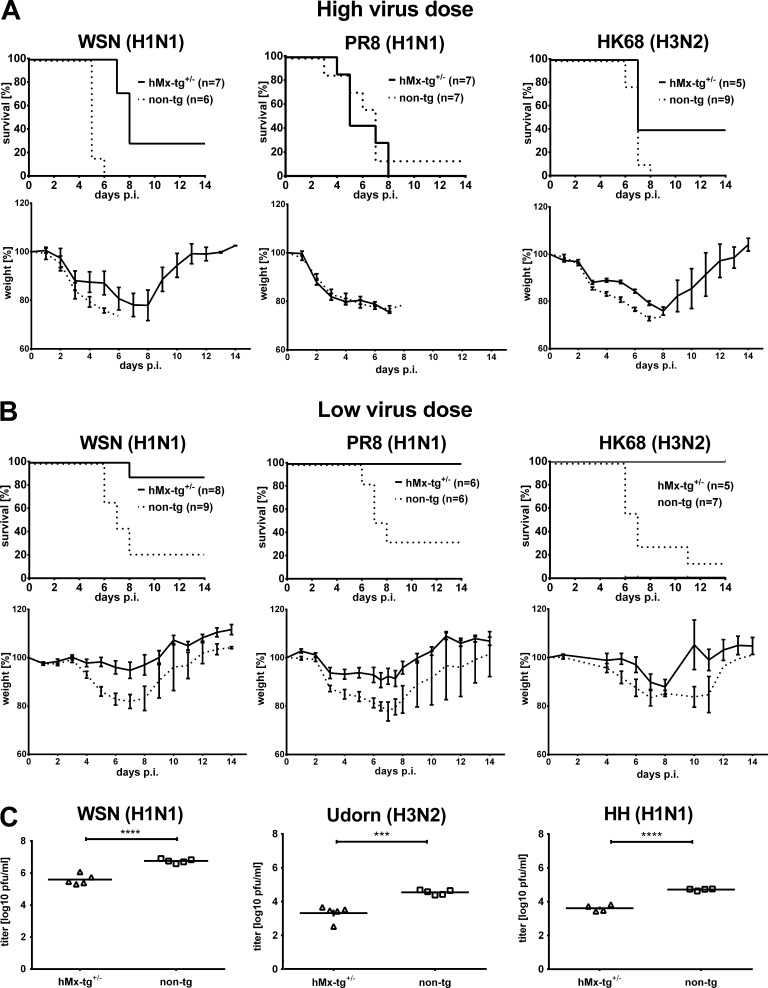Figure 5.
hMx-tg mice exhibit only moderate resistance to influenza A viruses of human origin. (A) Groups of hMx-tg+/− and non-tg mice were challenged by the i.n. route with ∼10 LD50 (high dose; values refer to non-tg mice) of mouse-adapted influenza A virus strains of human origin, namely A/WSN (5 × 103 pfu; seven hMx-tg+/− and six non-tg), A/PR8 (104 pfu; seven animals each) or A/HK68 (100 pfu; five hMx-tg+/− and nine non-tg). (B) Other groups of transgenic and nontransgenic mice were challenged with 2–3 LD50 (low dose) of A/WSN (1.3 × 103 pfu; eight hMx-tg+/− and nine non-tg), A/PR8 (3 × 103 pfu; six animals each) or A/HK68 (30 pfu; five hMx-tg+/− and seven non-tg). Weight loss was monitored daily; animals were sacrificed and scored dead when weight loss reached the 25% limit. (C) Groups of hMx-tg+/− and non-tg mice were infected with 104 pfu of human influenza virus strains WSN, Udorn or HH. Viral titers in the lungs at day 4 after infection are shown. ***, P < 0.0005; ****, P < 0.0001, Student’s t test.

